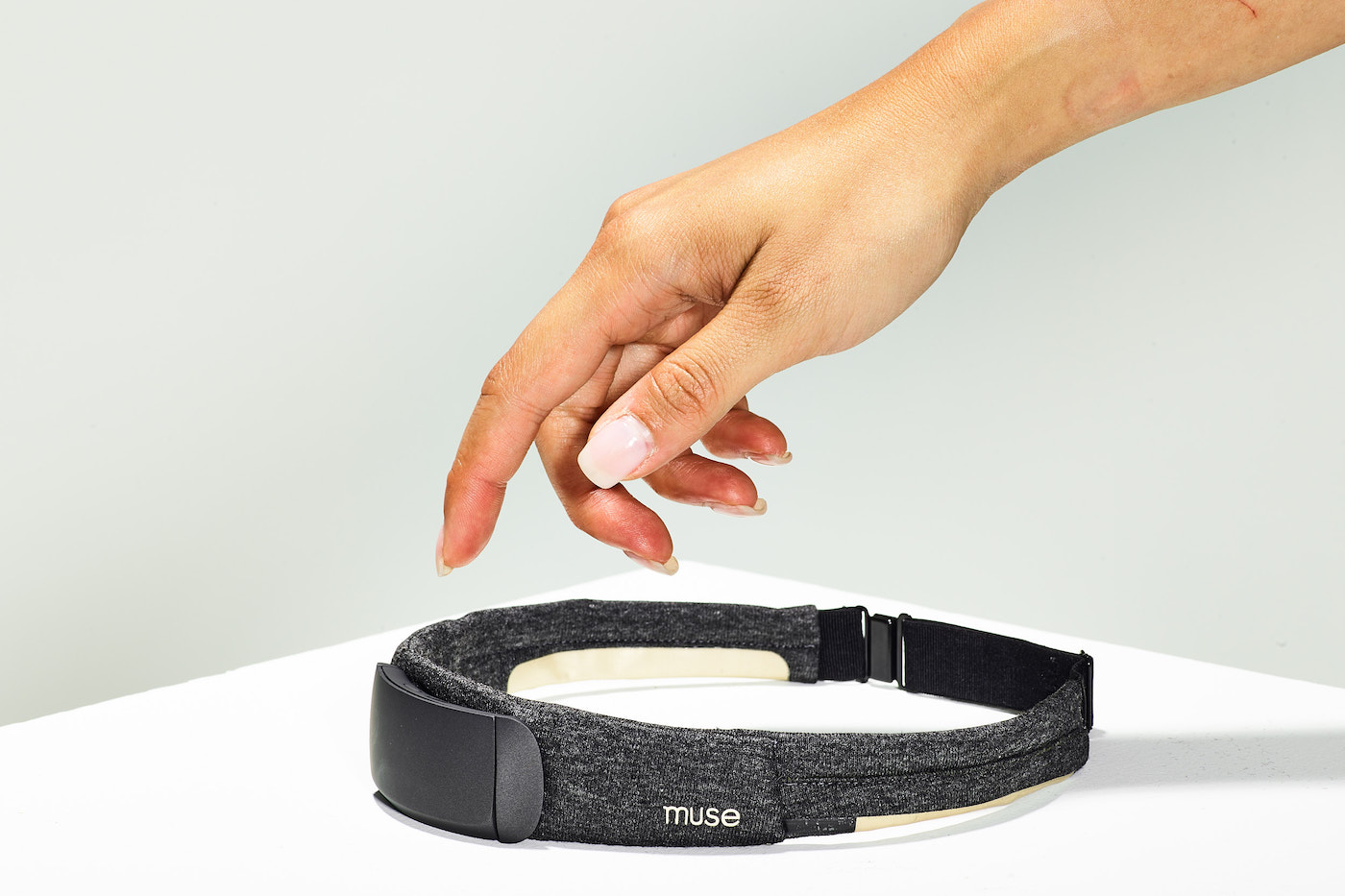Muse’s New Brain-Sensing Headband Creates Personalized White Noise for Faster, Dreamier Sleep
By refreshing the contraption's design from the outside-in, Muse has fashioned a device that personalizes sleep journeys based on your brain waves. "We noticed a lot of Musers were using their devices in the evening—some to unwind from work, and many right before bed to help them sleep," says Alec Singleton, vice president of product management at Muse. "As we started adding guided meditations, we also saw a lot of Musers using our sleep meditations. We created Muse S to help Muse users the ability to use their Muse in more places, including in bed."
With a fabric shell and a neurofeedback feature called Go-to-Sleep Journeys, Muse S prepares you for a pleasant slumber. Think of a white noise machine. Now, imagine that you get to choose the sounds filling your ears ("underwater world" or "magic carpet" or "enchanted forest"). Sounds cool, right? What's more, the EEG technology remixes your chosen soundtrack based on what's happening in your mind. "We created purpose-built sleep meditations that help lull you to sleep with guidance from expert teachers and a personalized soundtrack created from your body," says Singleton.
The time couldn't be more ripe for sleep technology. When Well+Good asked 1,500 readers about their sleeping habits last year, 92 percent of respondents reported feeling fatigued more than one day per week and 53 percent listed meditation as frequently used strategy for remedying sleep issues.

{{post.sponsorText}}
Of course, I had to give Muse's newest device a test run. So cut to me, lying on my couch with the sound of whale's communicating in the "Underwater World." Whenever my mind escaped to the proverbial ocean surface and got distracted, the whales gently ushered me back underwater with slightly louder clicks, whistles, and pulsed calls. In addition to the sounds of nature, a meditation teacher also guided me deeper into my imagination. The whales! The flow of water! The tides!
There's something soothing about hearing your own inner-monologue remolded into a soundscape that's absent of words. It demanded my attention and allowed me to slip out of the verbal mode that's my default. “We wanted to offer our users improved ways to hack their bedtime ritual through responsive guidance, neurofeedback, and tangible data,” said Chris Aimone, Muse co-founder and CTO. Will it truly make a dent in my chronic insomnia? TBD, but what I'm doing in the meantime is creating a barrier between my waking life and my sleeping one.
You can decompress your spine while you sleep—here's how. And if you've got a sleep-talker in the bed beside you, we've got you.
Loading More Posts...
